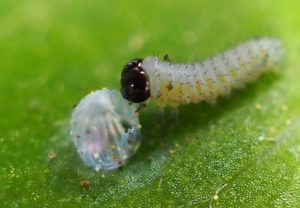
Monarch butterflies have been on earth for more than 10 million years. Sadly, the monarch butterfly numbers have substantially dropped over the last two decades.
The monarch is the only butterfly species in the world to undertake a long-distance round-trip migration. Each fall, monarchs west of the Rocky Mountains travel to specific sites on the California coast. Monarchs from the eastern U.S. and southern Canada undertake a much longer journey, up to 3,000 miles, to wintering grounds in the mountains of central Mexico.
Illegal logging in that country has decimated the forests where these butterflies usually congregate. But, that’s only part of the story. Besides the habitat loss, monarchs are disappearing due to natural disease and predation, adverse weather and the decline of nectar and larval host plants.
Six things you can do to help.
1. Plant native milkweed. Without it the species cannot survive.

Butterfly weed (Asclepias tuberosa) is a perennial native with orange or yellow flowers that appear in late summer and early fall. It attracts queen and monarch butterflies for nectar and larval food. You may have to search for native milkweeds from nurseries that specialize in native plants or butterfly gardens. Focusing on planting native communities that incorporate native milkweed will aid in developing appealing habitats. Native milkweeds can be mistaken for tropical milkweed (Asclepias curassavica) which is usually sold in garden centers. When shopping for milkweed, look for the native species and ask for plants that have not been treated with insecticides. If you do have tropical milkweed, don’t despair, monarch larvae will still feed on it. It is important to cut back your tropical milkweed plants in the fall so that Monarchs do not stay year-round in the area. Cutting back these plants also reduces the spread of a protozan that causes butterflies to have distorted wings.
If you are interested in learning more about the many species of Asclepias that is native to Florida, visit the Monarch Initiative’s website. They even have native milkweed you can purchase specific to your area. https://www.themonarchinitiative.org/assets/ext/img/monarch/native-milkweed.pdf
2. Use Integrated Pest Management Practices (IPM)
Integrated pest management, or IPM, is a comprehensive approach to managing plant pests. IPM uses many different methods to
cause the least harm to people, property, and the environment.
Broad-spectrum pesticides can kill many types of insect larvae, including butterfly larvae. Use harsher, broad spectrum chemicals last and first try to use natural products such as insecticidal soap or horticultural oil. Always follow directions on the label. Milkweed is the only plant that monarch butterflies lay eggs on, and its leaves are the sole food eaten by this butterfly’s larvae, so killing it destroys monarchs forever.
3. Create a Monarch Way-Station

Let a part of your yard get overgrown, and fill it with milkweed plants. Set out a butterfly-safe watering dish where they can stop to drink, and you’ll ensure that they have a safe place to stop, rest, and regroup during their migration. Use sponges or pebbles as a filler to keep container mosquitoes from breeding there.
4. Do Your Part to Combat Climate Change
Recycle, drive less, reduce the waste you create, ensure that your home is as energy-efficient as possible, buy local. Every little bit of effort helps to reduce our footprint or impact on the climate.
5. Educate Yourself
Learn as much as you can about local dangers to monarch habitats, and determine what kind of action would be best for you to take. If you don’t have land of your own, you could look into the possibility of volunteering at a community garden space.
6. You Can Help! Spread the Word
Tell others about the monarch’s plight, and encourage them to take these steps. Share educational materials with friends, family members and co-workers, start a Facebook page, or volunteer to start a local butterfly garden. The more people who know how to help these winged wonders, the better!
Let’s work together to help save the monarch.
Written by Greg Lussier, Columbia County Master Gardener Volunteer
 0
0
